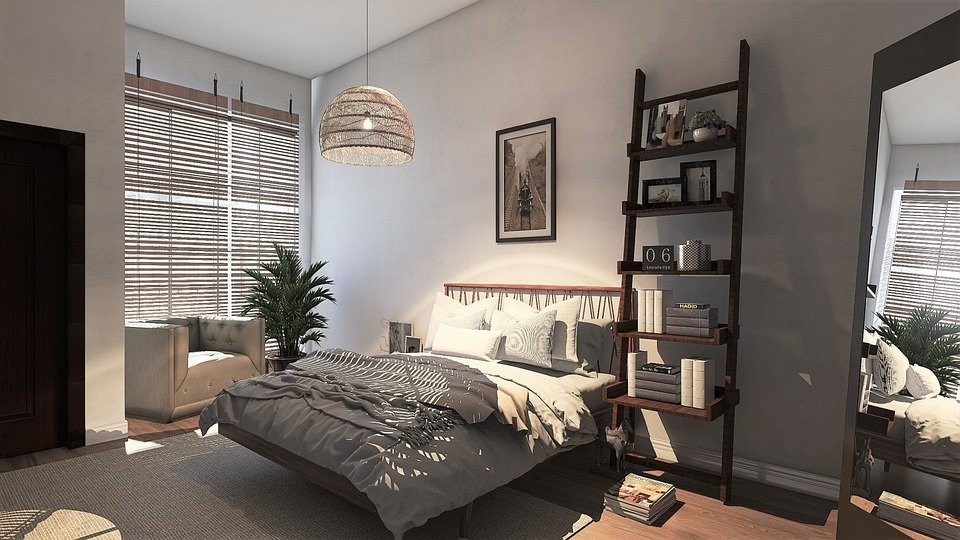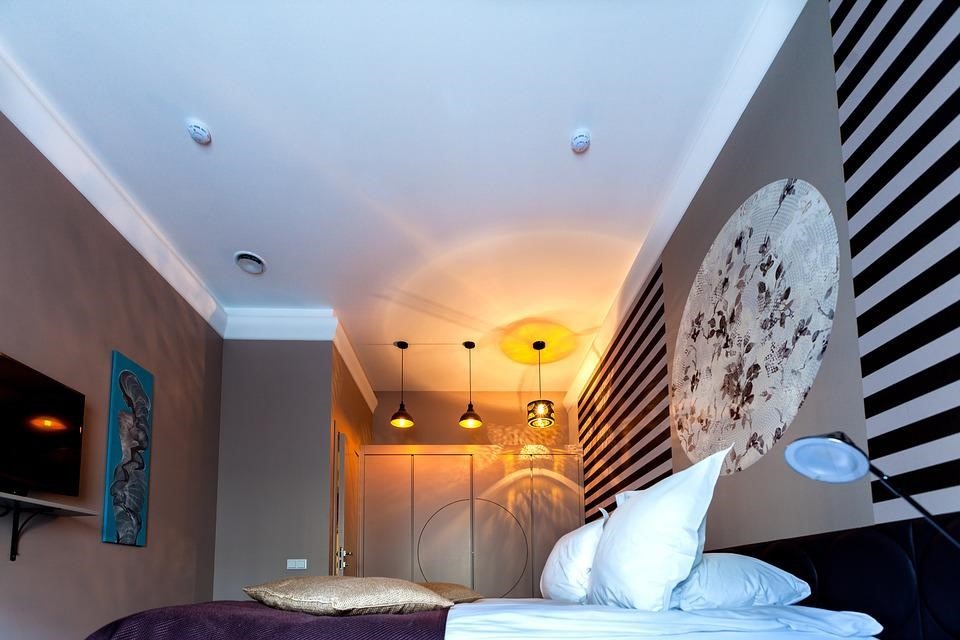Lighting is an important element in room décor. It can help transform the space and has an impact on the emotions of the people inhabiting that space. Good lighting helps brighten dark corners, inspires creativity, and affects the mood.
When it comes to lighting, both the ambience and brightness matter. The type and amount of lighting vary depending on the room e.g., a bathroom or kitchen needs brighter lights than the bedroom. For the living room or bedroom, one can create contrast between the centre of the room and the darker corners.
A bedroom is one’s place for quiet, rest, and relaxation. This sanctuary should have a blend of lighting that is functional, useful, and at the same time decorative. Getting the bedroom lighting just right is crucial. Whether it be day or night, the lighting affects your usage and mood.
In this article, we share a few simple tips that would help you in choosing the best lighting for your bedroom.
- Outline Your Needs

Image – ID 5460160/Pixabay
Before deciding on the kind of lighting for your bedroom, it is important to understand the functional aspects of the room. Is it a place only for rest, or would it double up as a place of work too? The ultimate focus of lighting should be to provide comfort while being functional at the same time.
- Layered Lighting

Image – stevepb/ Pixabay
In a bedroom, apart from the general lighting, one should also pay attention to ambient lighting. Instead of having a single source of light, you can opt for a mix of lighting. Overhead, accent and task lights places at various heights, and with varied luminescence would create a warm and cozy room. A bedroom is a place for rest and rejuvenation. Bright and jarring lights create inconvenience whereas the subtle interplay between dark and light creates appeal.
- Bedside lighting

Image – Pexels/ Pixabay
A light next to the bed is extremely important. It is the last light you switch off once you are ready to snooze, and the first switch you hit when you wake up in the middle of the night.
Table lamps, wall sconces, and pendant lights are a few of the options available to take care of bedside lighting. You can play with the texture and colour of the lampshades. It can either blend in with the rest of the décor or stand in contrast to them so as to be a feature piece.
- Wall Lights Are A Saviour

Image – jeanvdmeulen/ Pixabay
Wall Lights are especially important in bedrooms where space is at a premium. Floor lamps take up plenty of floor space and would make the small space more constrained. This is where wall lights come to the rescue. They are available in a variety of styles and add interest to the overall ambience.
Wall lights also add a minimalist touch to the room.
- How Warm Is The Room?

Image – KrysMantovani/ Pixabay
Warm or neutral white light temperature adds a soothing atmospheric feel to the room. Incandescent or halogen bulbs with a colour temperature between 2700-3000k are generally recommended as they give off a soft white glow.
Since white colours would make you more alert, warmer lights are better for the bedroom since they activate the production of the sleep-inducing hormone melatonin. Also, daylight bulbs make the room appear colder and more sterile.
LEDs are a popular choice these days as they are available for various fixtures, are long-lasting, and do not increase the room temperature.
Draping fabric or paper over the bulbs in a bid to lessen the brightness is hazardous and should be avoided at all times.
- Dull or Bright?

Image – KrysMantovani/ Pixabay
Though bulbs with a brightness of 2000-4000 lumens are advisable for bedrooms, it depends on the kind of feel you wish to create. The bulb’s lighting intensity and the colour it emits are also defined by the functionality of the bedroom. Using frosted bulbs or soft-white bulbs helps get rid of shadows created by the lamp shades or chandeliers.
The number of bulbs in the room depends on the room size. The larger the room, the more is the number of bulbs required.
- Flexibility

Image – Pexels
Nowadays, bedrooms are more than just a place to sleep. They sometimes double up as a family room, a place to work, or even study. So, the lighting must be flexible and adaptable to all these various requirements. Dim lights when you wish to rest, and bright lights when you are in the mood to read or work.
A single recessed overhead light is a big no! It makes the room bland and boring. Also, it can create spots and shadows. Instead of a single source, lights can be placed at various places in the room – ceiling, floor, wall, desk, etc to create warmth and appeal. In circumstances where space or finance are a constraint, one can install dimmers. Dimmers are an effective option to make the lights serve multiple uses. It is better to fix dimmers on individual fixtures rather than replacing a wall switch with a dimmer that adjusts all lights at the same time.
- Don’t Ignore The Corners

Image – ChellyRika/ Pixabay
Any empty dull corner in the bedroom can be brightened by placing oversized floor lamps. There are a wide variety of shades available–right from texture, tone, material, design, and colour. Choose a design that adds to the overall design of the room, and the dark corner might become the centre of attraction!
Get in touch with us, and our team will be happy to assist you in lighting up your bedroom the way you want it.
